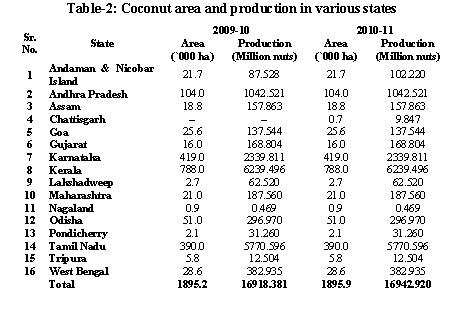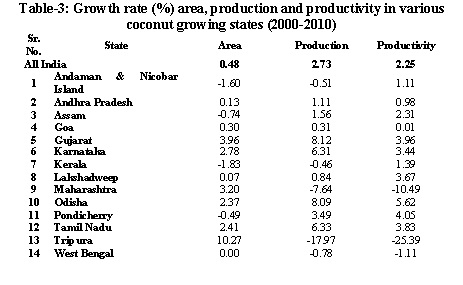The coconut palm is referred to as `Kalpavriksha` - the `tree of haven` as each and every part of the palm is useful to mankind m one way or other. It provides food, drink, fuel and timber. Millions of families in India depend on coconut for their livelihood either directly or indirectly India ranks third in area and production of coconut in the world. As per 2010-11 statistics, the annual coconut production in India is 16943.00 million nuts from an area of 1895 thousand ha with an average productivity of 8965 nuts/ha (Table-1).

In India there is distinct difference in pattern of distribution of coconut. The four southern states; Kerala, Tamil Nadu, Karnataka and Andhra Pradesh are the main coconut growing areas in the country which together accounts for 90% of area and 93% in production (Table-2).


It has been demonstrated that a fourfold increase in yield can be achieved by adopting scientific technologies in coconut cultivation as compared to the unscientific practices. Thus, there is a great scope for enhancing the productivity of coconut through adoption of scientific cultivation technologies, which are described here under.

